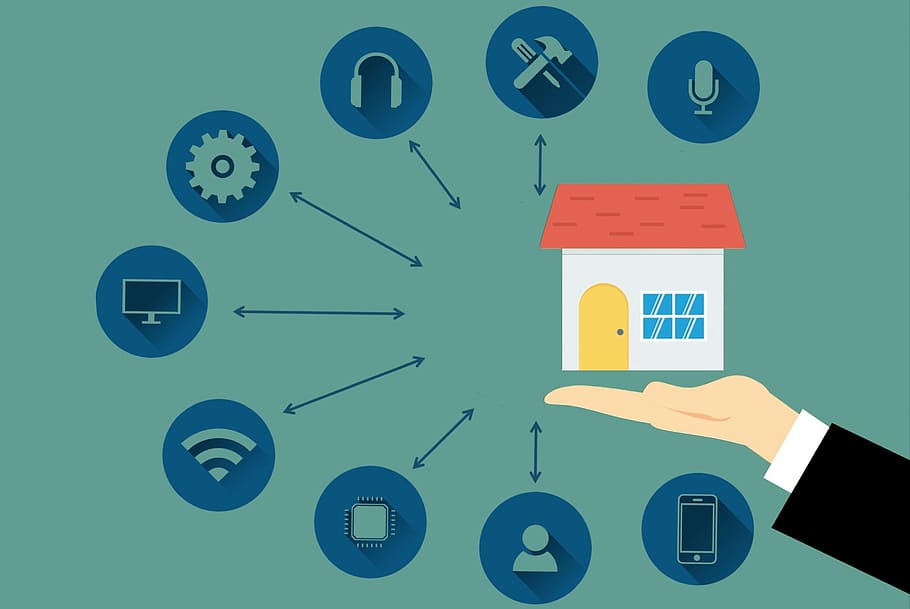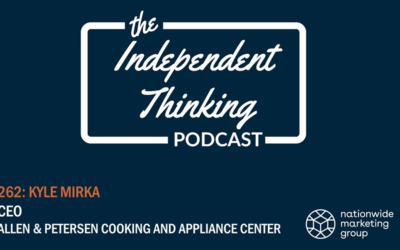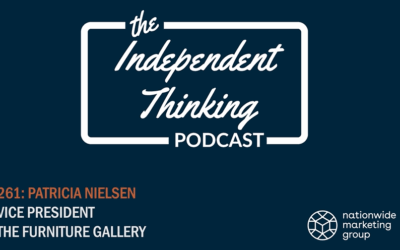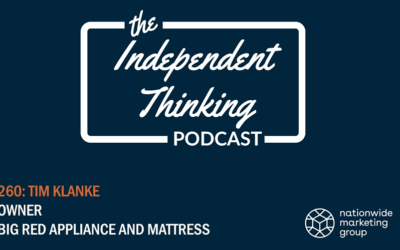Although they’re often used interchangeably, a smart home is not the same as a connected home. Smart homes feature products, like a doorbell or thermostat; connected homes join those products together to unleash a mountain of benefits that no one item could deliver on its own.
The smart home concept is no longer a gimmick or a fad and has become a part of millions of households worldwide. However, in a lot of ways, the idea of a connected home is still a novelty. With the speed of product introductions, short product life cycles and the layering of multiple services and control networks, customer confusion on how to achieve a connected home is at an all-time high. But that means the business growth opportunity is high for great “show me” and “help me” retailers.
The Size of the Market
Behind wearables (smart watches and fitness trackers), smart home products have been the second-fastest-growing category in the CE segment in terms of percent growth (over 50%). And that isn’t expected to slow down anytime soon. In fact, the addressable market gets even more impressive when you look at the $490 billion in revenue these products are expected to generate by the end of 2019. Smart home products are also estimated to draw an impressive 42% repeat shopping behavior, which means more footsteps in your locations.
But here’s where it gets interesting. We’re also learning that consumers don’t quite understand this market, with 52% of people either scared or intimidated by these products. And that puts your knowledgeable sales team in a prime position to overcome these objections and create a connected home experience that meets your customers’ needs – and creates customers for life.
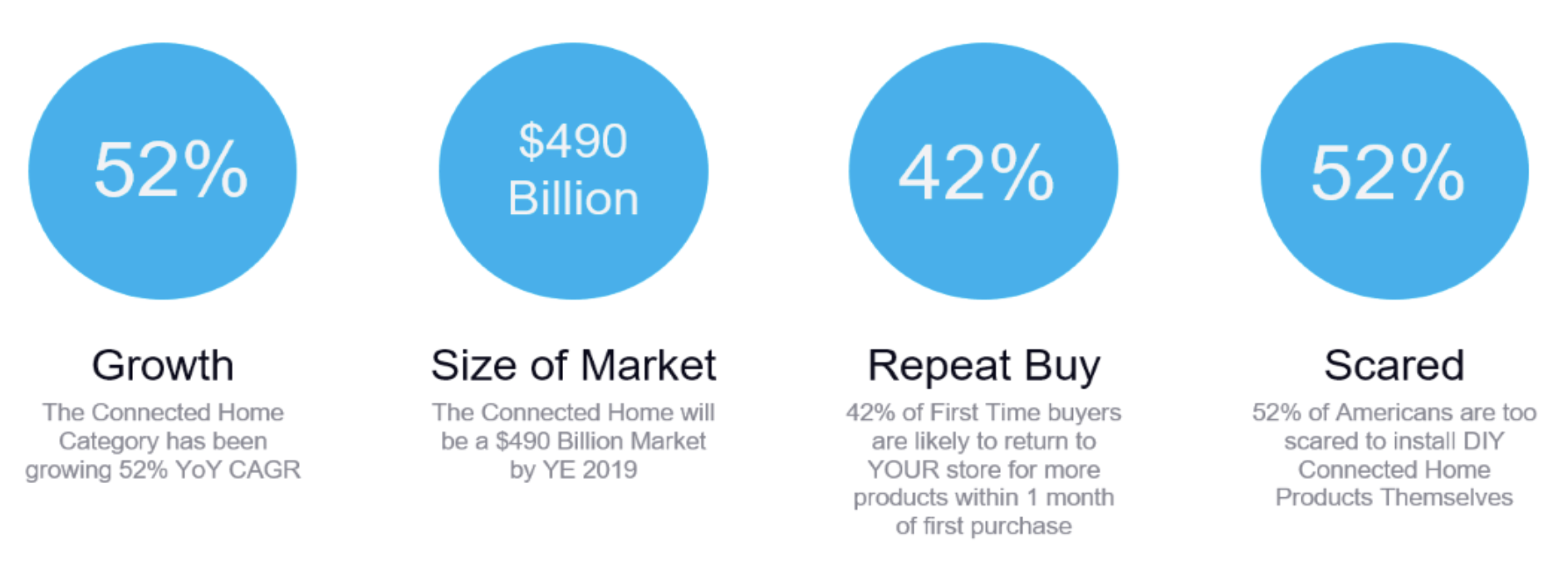
Smart Appliances
News of the negative effects that smart phones have on children and families keeps popping up with increasing frequency, ironically, on our phones. All of these issues stem from putting too much focus on a single device and not giving enough attention to the people around us. In short, it’s the infatuation with smart devices and not connected homes that is causing the problems.
Major home appliance manufacturers have recognized this challenge and are quickly evolving to deliver solutions that bring the family back together. Since the kitchen is the hub of the home, it makes perfect sense that connected kitchen appliances could be a great solution to these smart device ills. In fact, many manufacturers are now incorporating “HUB” features into their kitchen products, connecting music, video, social and productivity content in the most popular location of the home.
Retailers, and more specifically the local independents who offer high-touch service and installation, need to be very focused on offering the best solutions to help promote the benefits and value of the connected kitchen. Over the next several years, as consumers become even more aware of the positive impact a connected kitchen could bring to their families, we should expect to see a rapid increase in sales.
Smart Consumer Electronics
In the CE connected home space, there are a few categories whose products are defined as “smart,” primarily security, entertainment, networking and energy. Collectively, the number of products available in these segments is well into the thousands. But it doesn’t have to be overwhelming.
Retailers need to focus on making these categories as turnkey as possible by limiting the number of brands and products. For the independent retailer, some of the platform choices may already be in place. With Google, we get a great brand backed by an open platform, top-selling products and existing functionality in some of the products we sell today. Google has invested heavily in smart home products and the connected home ecosystem, and is an easy choice.
Reimagining the Retail Connected Home Display
Because connected home is still in its early stages, it requires a high-touch consultation to reassure the 52% that are intimidated by the products and encourage them to jump in and start the connected home journey. Unfortunately, “smart home” took a DIY approach to market in its early days. As a result, simple displays were created on standard peg board and shelf displays to grab attention to products. In fact, it is very rare to see a fully functioning connected home display at retail. The best “show me” retailers will need to find a way to demonstrate how the entire home can be connected, from front door to kitchen, living room to deck.
As smart homes continue to converge with our lives, it is going to take the best independent retailers to show customers what a great connected home experience truly looks like. The opportunities that the connected home represents through sales, service, installation and support are just an evolution of the smart home product offerings. Expanding both smart home products and connected home services will only grow the opportunity in this very large and quickly growing category.

